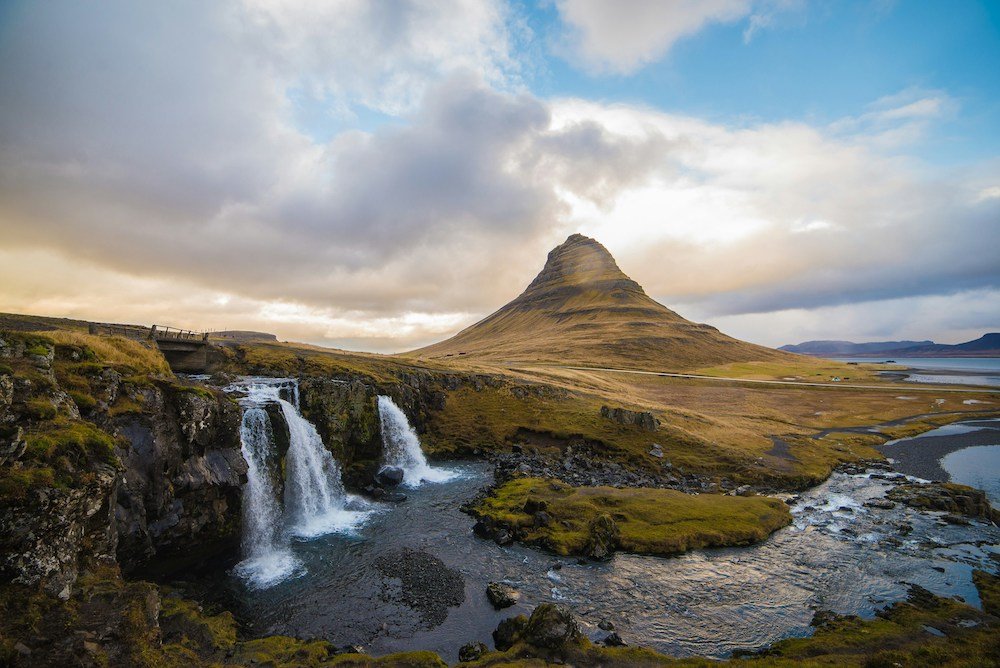
Want to discover which are the best North Atlantic Islands to visit on your next holiday?
The North Atlantic region, with its rugged coastlines, diverse landscapes, and rich cultural heritage, beckons adventurers and explorers from around the globe.
Nestled within this vast expanse of ocean are some of the world’s most breathtaking islands, each offering a unique tapestry of natural wonders and historical intrigue.
Stretching from the Arctic Circle to the subtropics, the North Atlantic region encompasses a diverse array of climates and ecosystems.
From the icy fjords of Greenland to the temperate shores of Bermuda, this maritime domain is home to a wealth of natural beauty and ecological diversity.
The North Atlantic Islands hold a special allure for travelers seeking escape, adventure, and discovery.
These remote outposts offer respite from the hustle and bustle of modern life, inviting visitors to immerse themselves in pristine landscapes, vibrant cultures, and centuries-old traditions.
In this article, we’ll uncover the hidden treasures of the North Atlantic Islands. From the rugged shores of Iceland to the sun-kissed beaches of Bermuda, each destination offers a unique blend of natural splendor and cultural heritage.
Join us as we explore the top 11 stunning North Atlantic Islands, where every horizon promises a new adventure and every shore a new discovery.
1. Iceland: Land of Fire and Ice

Nestled in the North Atlantic Ocean, Iceland captivates visitors with its otherworldly landscapes, where the forces of fire and ice converge to create a mesmerizing tableau of natural wonders.
Iceland’s geological makeup is nothing short of extraordinary, shaped by volcanic activity, glaciers, and tectonic forces.
From towering mountains to vast lava fields, the island’s terrain is a testament to the raw power of nature and the relentless march of geological time.
At the heart of Iceland’s dramatic landscape are its glaciers, vast rivers of ice that carve their way through mountains and valleys.
The country is also home to a multitude of volcanoes, some of which lie dormant beneath the surface, while others continue to spew forth molten lava and ash.
One of Iceland’s most iconic features is its abundance of geothermal hot springs, where steaming pools offer respite from the chilly Nordic air.
From the world-renowned Blue Lagoon to hidden gems nestled in remote valleys, these natural spas provide a tranquil sanctuary for weary travelers.
Beyond its natural beauty, Iceland boasts a rich cultural heritage that dates back centuries. The capital city of Reykjavik pulsates with energy, its streets alive with art galleries, museums, and vibrant nightlife.
Visitors can immerse themselves in Icelandic folklore and tradition at the National Museum of Iceland or explore the country’s literary heritage at the Reykjavik City Library.
For those seeking adventure, Iceland offers a plethora of outdoor activities, from hiking and horseback riding to glacier trekking and whale watching.
Whether marveling at the Northern Lights dancing across the sky or soaking in the warmth of a geothermal hot spring, Iceland offers an unforgettable journey into the heart of the North Atlantic.
2. Faroe Islands: Nature’s Masterpiece
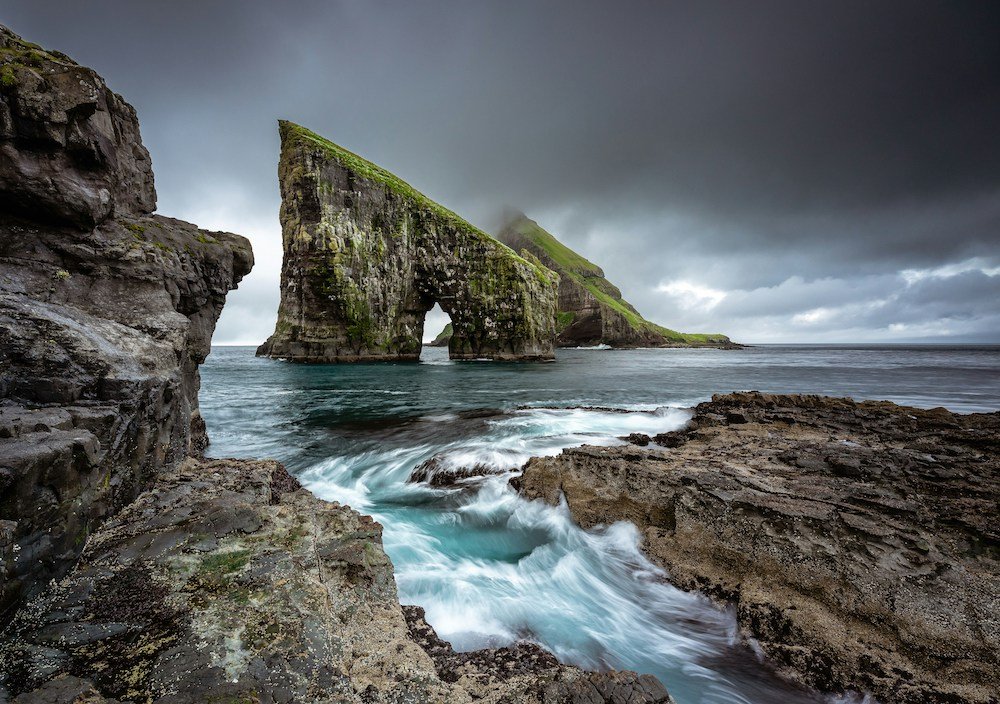
Tucked away in the North Atlantic, the Faroe Islands emerge like rugged jewels from the depths of the ocean, offering visitors a glimpse into a world untouched by time.
The Faroe Islands boast some of the most dramatic landscapes on Earth, where steep cliffs plummet into the swirling depths below, and emerald-green valleys give way to windswept moors.
Everywhere you turn, the scenery is a study in contrasts, with towering peaks and hidden coves waiting to be discovered.
One of the most iconic landmarks of the Faroe Islands is the towering sea stacks of Tindhólmur, rising majestically from the ocean like ancient sentinels guarding the coastline.
The island of Mykines, with its verdant cliffs and vibrant bird colonies, offers visitors a glimpse into a world teeming with life and natural beauty.
For nature enthusiasts, the Faroe Islands are a paradise of birdlife and wildlife, with millions of seabirds flocking to its shores each year.
From puffins and gannets to fulmars and kittiwakes, the cliffs and crags of the Faroes are alive with the sights and sounds of seabird colonies.
The island of Nólsoy, home to the Faroe Islands’ only forest, provides sanctuary to a variety of bird species, including the elusive white-tailed eagle.
Meanwhile, the waters surrounding the islands are teeming with marine life, from seals and dolphins to whales and porpoises.
Rooted in Norse heritage and Viking traditions, Faroese culture is a tapestry of folklore, music, and storytelling.
Traditional Faroese architecture, with its distinctive grass-roofed houses and turf-roofed churches, reflects a deep connection to the land and sea.
Visitors can immerse themselves in Faroese culture by exploring quaint fishing villages, attending local festivals, and sampling traditional cuisine.
From hearty stews and freshly caught seafood to delicate pastries and cakes, Faroese cuisine is a celebration of the islands’ rich culinary heritage.
3. Azores: Portugal’s Hidden Gem

Nestled in the heart of the North Atlantic, the Azores archipelago beckons travelers with its unspoiled landscapes, diverse ecosystems, and rich maritime heritage.
The Azores are a testament to the raw power of volcanic activity, with rugged coastlines, towering peaks, and steaming fumaroles defining the archipelago’s dramatic landscape.
From the volcanic crater lakes of Sete Cidades to the bubbling hot springs of Furnas, the Azores offer a glimpse into the Earth’s fiery origins.
Visitors can explore volcanic caves, hike through lush forests, and bathe in natural hot springs, immersing themselves in the healing waters that have drawn travelers to the islands for centuries.
Scattered across the Azores are a multitude of pristine lakes and cascading waterfalls, where emerald-green waters tumble down sheer cliffs into tranquil pools below.
The twin lakes of Lagoa das Sete Cidades, nestled within the crater of a dormant volcano, are a highlight of any visit to the Azores, their vivid hues contrasting against the surrounding landscape.
For those seeking adventure, the Azores offer endless opportunities for exploration, from canyoning down rushing waterfalls to kayaking through hidden coves and grottoes.
Above and below the surface, the Azores teem with life, making it a mecca for outdoor enthusiasts and nature lovers alike.
The nutrient-rich waters surrounding the islands are home to a dazzling array of marine life, including dolphins, whales, and loggerhead turtles.
Adventure seekers can embark on whale-watching excursions, diving expeditions, and deep-sea fishing charters, immersing themselves in the vibrant ecosystem that thrives beneath the waves.
With its pristine landscapes, abundant wildlife, and spirit of adventure, the Azores offer a captivating blend of natural beauty and adrenaline-fueled thrills, inviting travelers to embark on a journey of discovery in Portugal’s hidden gem.
4. Greenland: The World’s Largest Island

Greenland, the world’s largest island, is a land of superlatives, where towering glaciers, ancient icebergs, and vibrant Inuit culture converge to create a landscape unlike any other on Earth.
At the heart of Greenland’s otherworldly beauty are its massive glaciers, vast rivers of ice that stretch for miles across the polar landscape.
From the awe-inspiring Ilulissat Icefjord, a UNESCO World Heritage Site, to the towering ice sheet that blankets much of the island, Greenland is a realm of frozen splendor.
Visitors can witness the spectacle of calving glaciers, where towering ice cliffs plunge into the frigid waters below, sending cascades of ice crashing into the sea.
The sight of icebergs drifting serenely along Greenland’s coastline is a testament to the timeless dance of ice and ocean.
For thousands of years, the indigenous Inuit people have called Greenland home, their culture and traditions intricately woven into the fabric of the land.
Visitors to Greenland have the opportunity to immerse themselves in Inuit culture, from exploring remote settlements and learning traditional crafts to participating in cultural festivals and celebrations.
The capital city of Nuuk is a vibrant hub of Inuit art and culture, with museums, galleries, and cultural centers showcasing the rich heritage of Greenland’s indigenous communities.
Whether sampling traditional Inuit cuisine or learning the art of dogsledding from local experts, visitors can experience firsthand the warmth and hospitality of Greenland’s people.
Despite its harsh climate, Greenland is home to a surprising diversity of wildlife, from majestic polar bears and elusive Arctic foxes to migratory birds and marine mammals.
The coastal waters teem with life, offering visitors the chance to encounter humpback whales, narwhals, and seals in their natural habitat.
For adventurous travelers, Greenland offers a wealth of unique experiences, from heli-skiing on pristine glaciers to trekking across the Arctic tundra in search of the elusive Northern Lights.
Whether kayaking among icebergs or camping beneath the midnight sun, Greenland promises an unforgettable journey into the heart of the Arctic.
With its towering glaciers, vibrant culture, and abundant wildlife, Greenland is a land of endless wonder and discovery, inviting travelers to explore the untamed beauty of the world’s largest island.
5. Isle of Skye: Scotland’s Jewel

Perched on the edge of the North Atlantic, the Isle of Skye is a rugged and enchanting island that captures the imagination with its dramatic landscapes, ancient history, and warm Scottish hospitality.
The Isle of Skye is renowned for its wild and untamed beauty, where towering peaks, dramatic cliffs, and windswept moors converge to create a landscape of breathtaking grandeur.
From the iconic Cuillin Mountains to the rugged coastline of the Trotternish Peninsula, every vista on Skye is a masterpiece of nature’s design.
Visitors can explore hidden coves, wander along windswept beaches, and hike through mist-shrouded glens, immersing themselves in the timeless beauty of Scotland’s western isles.
The ever-changing light plays tricks on the landscape, casting shadows and revealing hidden depths, making every journey on Skye a voyage of discovery.
At every turn, the Isle of Skye is steeped in history and legend, with ancient ruins, medieval castles, and sacred sites dotting the landscape.
The iconic Dunvegan Castle, home to the Chiefs of Clan MacLeod for over 800 years, stands sentinel on the shores of Loch Dunvegan, its storied past echoing through the halls.
For those seeking adventure, Skye offers a wealth of natural wonders to explore, from the enchanting Fairy Pools of Glen Brittle to the mysterious standing stones of the Quiraing.
Legends of fairies, giants, and ancient warriors abound, adding a touch of magic to every corner of the island.
No visit to the Isle of Skye would be complete without sampling its rich culinary heritage and experiencing the warm hospitality of its people.
From traditional Scottish fare, such as haggis, neeps, and tatties, to freshly caught seafood and artisanal cheeses, Skye’s cuisine reflects the island’s bounty of land and sea.
Visitors can dine in cozy pubs and charming tearooms, where roaring fires and live music create a welcoming atmosphere, or sample local delicacies at farmers’ markets and food festivals.
Whether sharing stories with locals over a dram of whisky or indulging in a hearty bowl of cullen skink, the Isle of Skye offers a taste of Scotland’s rich culinary traditions.
With its dramatic landscapes, ancient ruins, and warm Scottish hospitality, the Isle of Skye is a jewel in Scotland’s crown, inviting travelers to explore its timeless beauty and rich cultural heritage.
6. Cape Breton Island: Canada’s Maritime Gem
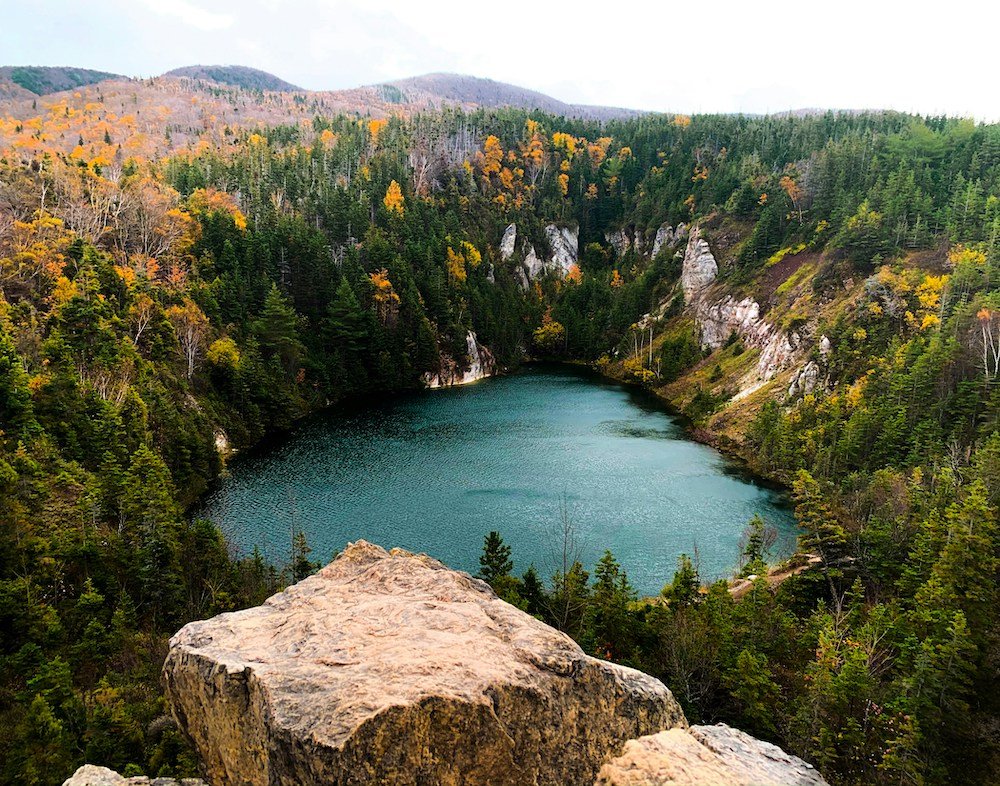
Nestled along the rugged coastline of Nova Scotia, Cape Breton Island captivates visitors with its stunning landscapes, vibrant culture, and warm Maritime hospitality.
The Cabot Trail, one of Canada’s most scenic drives, winds its way along the rugged coastline of Cape Breton Island, offering breathtaking vistas of the Atlantic Ocean, lush forests, and towering cliffs.
From the panoramic views of Cape Smokey to the serene beauty of Ingonish Beach, every twist and turn of the Cabot Trail reveals a new facet of Cape Breton’s natural splendor.
Visitors can hike along coastal trails, explore hidden coves, and marvel at the majestic beauty of the Cape Breton Highlands National Park, where lush forests, cascading waterfalls, and pristine lakes beckon adventurers and nature lovers alike.
Cape Breton Island is steeped in Scottish heritage, with a rich tapestry of Gaelic traditions, music, and folklore woven into the fabric of daily life.
From lively ceilidhs and traditional square dances to the haunting strains of the bagpipes, the island resonates with the sounds of Celtic music and song.
The Highland Village Museum offers visitors a glimpse into the island’s Scottish roots, with meticulously restored historic buildings and costumed interpreters bringing Cape Breton’s Gaelic culture to life.
Visitors can explore traditional crofters’ cottages, watch skilled artisans at work, and learn about the customs and traditions that have shaped Cape Breton’s identity for generations.
Cape Breton Island is a playground for outdoor enthusiasts, with a wealth of activities to suit every interest and skill level. Visitors can paddle along tranquil rivers, cycle through rolling hills, and tee off at world-class golf courses with stunning ocean views.
Throughout the year, Cape Breton comes alive with a vibrant calendar of cultural festivals and events, celebrating everything from traditional music and dance to local cuisine and craftsmanship.
From the Celtic Colours International Festival to the Acadian Festival of Clare, the island offers a diverse array of experiences that celebrate its rich cultural heritage and maritime spirit.
With its stunning coastal scenery, vibrant Gaelic culture, and endless outdoor adventures, Cape Breton Island is a maritime gem that beckons travelers to explore its timeless beauty and warm Maritime hospitality.
7. Newfoundland: Where History Meets Nature
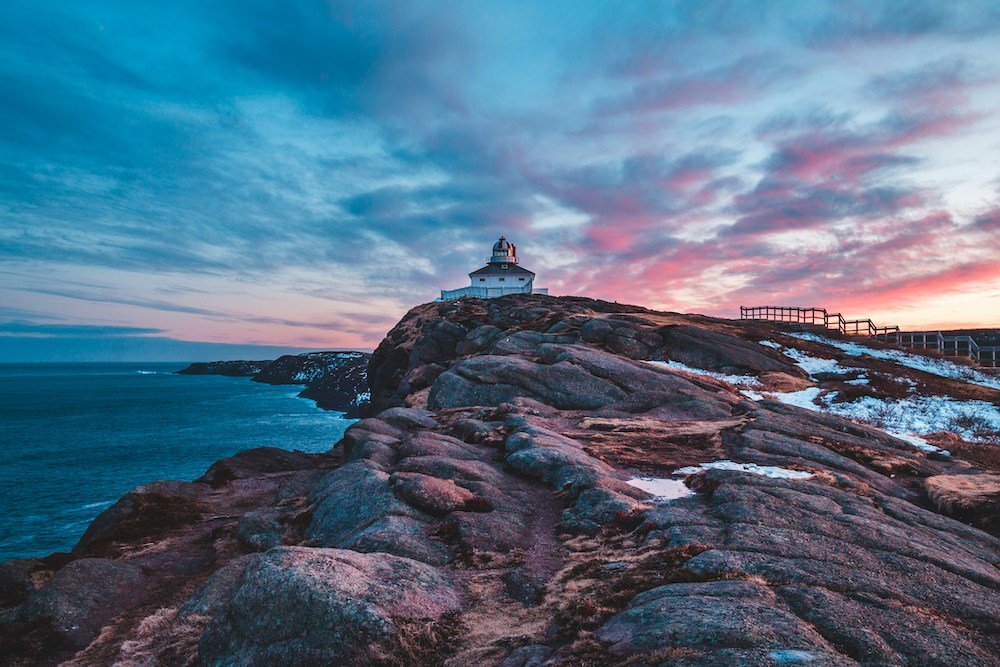
Perched on the eastern edge of Canada, Newfoundland is a land of rugged beauty, where towering cliffs, ancient fjords, and rich maritime history converge to create a landscape unlike any other.
Newfoundland’s northern coast is home to Iceberg Alley, a stretch of ocean where towering icebergs drift southward from the Arctic, their majestic forms glistening in the sunlight.
Visitors can embark on boat tours to witness these frozen giants up close, marveling at their sheer size and otherworldly beauty.
Inland, Gros Morne National Park beckons adventurers with its dramatic landscapes, ancient fjords, and towering mountains.
Designated a UNESCO World Heritage Site, Gros Morne is a geological wonderland, where visitors can hike through rugged terrain, paddle along pristine lakes, and explore the unique ecosystems that thrive within its boundaries.
Along Newfoundland’s rugged coastline, picturesque fishing villages dot the landscape, their colorful houses and weather-beaten docks offering a glimpse into the province’s rich maritime heritage.
From the historic town of Trinity to the quaint village of Brigus, these coastal communities are steeped in history and charm, with stories of seafaring adventures and resilient settlers echoing through the streets.
For outdoor enthusiasts, Newfoundland offers endless opportunities for exploration, from hiking along coastal trails to kayaking through sheltered coves and inlets.
The East Coast Trail, a 300-kilometer network of rugged paths and scenic viewpoints, winds its way along the province’s eastern shore, offering breathtaking views of cliffs, sea stacks, and pounding surf.
Newfoundland’s history stretches back thousands of years, with evidence of Indigenous cultures and early European settlements scattered across the landscape.
L’Anse aux Meadows, a UNESCO World Heritage Site, is home to the remains of a Norse settlement dating back over 1,000 years, making it the only authenticated Viking site in North America.
Visitors to L’Anse aux Meadows can explore reconstructed Viking longhouses, interact with costumed interpreters, and learn about the daily lives of the Norse settlers who once called Newfoundland home.
Nearby, the Norstead Viking Village offers immersive experiences, including boat building demonstrations, blacksmithing workshops, and traditional Viking games.
With its breathtaking landscapes, rich maritime history, and ancient Viking heritage, Newfoundland is a land of endless discovery, where every corner reveals a new chapter in the story of Canada’s easternmost province.
8. Bermuda: Paradise in the Atlantic
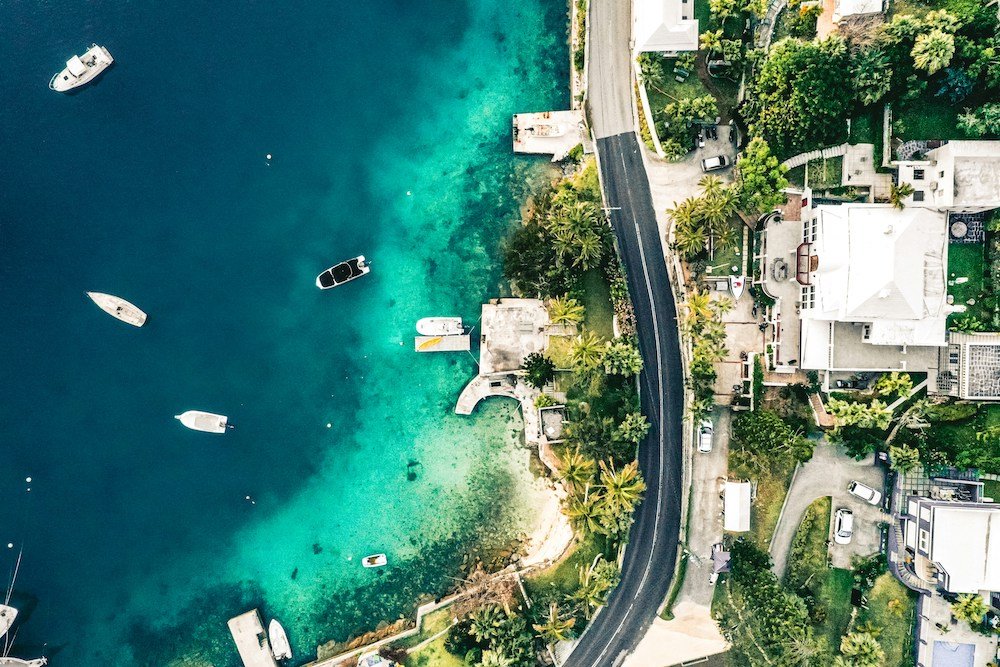
Nestled in the azure waters of the North Atlantic Ocean, Bermuda is a tropical paradise that captivates visitors with its pink sand beaches, vibrant coral reefs, and rich colonial heritage.
Bermuda’s beaches are legendary, with powdery pink sand that stretches as far as the eye can see, fringed by crystal-clear turquoise waters that beckon swimmers, snorkelers, and sunbathers alike.
From the iconic Horseshoe Bay Beach to the secluded shores of Warwick Long Bay, Bermuda offers a multitude of pristine beaches to explore and enjoy.
Visitors can stroll along the shoreline, basking in the warm glow of the sun, or venture beneath the waves to discover a kaleidoscope of marine life that thrives within Bermuda’s protected coves and bays.
Beneath the surface, Bermuda’s waters teem with life, with vibrant coral reefs that are home to a dazzling array of fish, turtles, and other marine creatures.
Snorkelers and scuba divers can explore these underwater wonderlands, swimming among colorful coral gardens and ancient shipwrecks that lie scattered along the seabed.
Bermuda’s commitment to marine conservation has made it a sanctuary for endangered species, including humpback whales, green sea turtles, and the elusive Bermuda petrel.
Visitors can embark on eco-friendly boat tours and wildlife excursions, gaining insight into the island’s delicate ecosystem and the efforts to protect its natural treasures.
Steeped in British colonial history, Bermuda is dotted with historic landmarks, forts, and stately homes that offer a glimpse into the island’s past.
The capital city of Hamilton boasts a wealth of architectural treasures, from colonial-era churches and government buildings to charming cobblestone streets lined with pastel-colored cottages.
Visitors can explore the Royal Naval Dockyard, a UNESCO World Heritage Site, where restored historic buildings and museums showcase Bermuda’s maritime heritage and naval history.
The iconic Gibbs Hill Lighthouse offers panoramic views of the island, while the historic town of St. George’s invites visitors to wander through its narrow streets and discover hidden gems around every corner.
With its natural beauty, rich marine life, and colonial charm, Bermuda is a paradise in the Atlantic, where every sunset brings new wonders and every horizon promises adventure.
9. Orkney Islands: Scotland’s Archaeological Treasure Trove

Located off the northeastern coast of Scotland, the Orkney Islands are an archaeological wonderland, where ancient sites, stunning landscapes, and rich folklore come together to create a captivating tapestry of history and heritage.
The Orkney Islands are home to some of the oldest and best-preserved Neolithic sites in Europe, dating back over 5,000 years.
From the iconic standing stones of the Ring of Brodgar to the ancient village of Skara Brae, the islands are a treasure trove of archaeological wonders that offer a fascinating glimpse into prehistoric life.
Visitors can explore chambered tombs, stone circles, and ceremonial sites, marveling at the ingenuity and craftsmanship of Orkney’s ancient inhabitants.
The Heart of Neolithic Orkney, a UNESCO World Heritage Site, encompasses some of the most significant Neolithic monuments on the islands, including the enigmatic Standing Stones of Stenness and the towering monoliths of the Barnhouse Settlement.
Beyond its archaeological riches, the Orkney Islands boast some of the most breathtaking landscapes in Scotland, with rugged coastlines, windswept moors, and pristine beaches that stretch for miles along the Atlantic Ocean.
Visitors can embark on coastal walks and hikes, following ancient footpaths that wind their way along towering cliffs and panoramic viewpoints.
The Orkney Isles offer endless opportunities for exploration, from birdwatching on remote sea stacks to kayaking through sheltered bays and inlets.
The Orkney Islands are steeped in tradition and folklore, with a rich tapestry of myths, legends, and superstitions that have been passed down through generations.
From tales of selkies and sea monsters to stories of Viking raids and Pictish kings, the islands are alive with the echoes of the past.
Visitors can immerse themselves in Orkney’s rich cultural heritage by attending traditional music festivals, sampling local cuisine, and exploring the islands’ vibrant arts scene.
The Orkney Folk Festival, held annually in May, showcases the best of traditional music and dance, while the St. Magnus Cathedral in Kirkwall offers a glimpse into the islands’ medieval past.
With its ancient monuments, stunning landscapes, and vibrant folklore, the Orkney Islands are a treasure trove of history and heritage, inviting travelers to uncover the secrets of Scotland’s ancient past.
10. Shetland Islands: Scotland’s Northern Isles

Situated at the northernmost tip of Scotland, the Shetland Islands are a rugged and enchanting archipelago, where stunning coastal landscapes, rich Norse heritage, and vibrant cultural traditions converge to create a destination unlike any other.
The Shetland Islands boast some of the most dramatic coastal landscapes in Scotland, with towering sea cliffs, windswept beaches, and crystal-clear waters that teem with marine life.
From the rugged cliffs of Eshaness to the pristine sands of St. Ninian’s Isle, every corner of the archipelago offers breathtaking vistas and opportunities for outdoor exploration.
Visitors can embark on coastal walks and nature hikes, exploring hidden coves, sea caves, and ancient ruins along the way.
The islands are also a haven for wildlife enthusiasts, with seabird colonies, seal haul-outs, and otter hotspots waiting to be discovered.
The Shetland Islands have a rich Norse heritage that dates back over a thousand years, with Viking settlers leaving their mark on the landscape in the form of ancient ruins, burial mounds, and archaeological sites.
From the Jarlshof Prehistoric and Norse Settlement to the Broch of Mousa, the islands are a treasure trove of Viking history and heritage.
Visitors can explore Viking longhouses, Pictish stone carvings, and Iron Age forts, gaining insight into the lives and cultures of the people who once called the Shetlands home.
The annual Up Helly Aa festival, held in Lerwick each January, celebrates Shetland’s Norse heritage with a spectacular torchlit procession and traditional Viking longship burning.
Music is at the heart of Shetland’s cultural identity, with a vibrant folk music scene that celebrates the islands’ Norse, Scottish, and Scandinavian roots.
From lively fiddle tunes and haunting ballads to toe-tapping reels and rhythmic dances, Shetland’s music reflects the spirit and resilience of its people.
Visitors can experience traditional Shetland music and dance at local festivals, ceilidhs, and community events throughout the year.
The Shetland Folk Festival, held annually in May, showcases the best of traditional music from around the world, while the Shetland Accordion and Fiddle Festival brings together musicians and enthusiasts for a weekend of music and merriment.
With its stunning landscapes, rich history, and vibrant cultural traditions, the Shetland Islands are a hidden gem waiting to be discovered, where every visit promises adventure and every moment is filled with the magic of Scotland’s northern isles.
Conclusion
As we conclude our journey through the 11 stunning North Atlantic Islands, we are left awestruck by the breathtaking beauty, rich history, and vibrant culture that define this enchanting region.
From the volcanic landscapes of Iceland to the pink sand beaches of Bermuda, each island offers a unique tapestry of natural wonders and cultural treasures.
The Faroe Islands enchant with their dramatic cliffs and rich birdlife, while the Azores beckon with their volcanic craters and azure lakes.
Greenland’s massive glaciers and Inuit heritage captivate the imagination, while the Isle of Skye mesmerizes with its rugged coastlines and ancient castles.
Cape Breton Island invites travelers to explore its scenic vistas and vibrant Gaelic culture, while Newfoundland’s rugged coastline and Viking history offer endless opportunities for discovery.
In Bermuda, travelers are lured by the allure of pink sand beaches and colonial charm, while the Orkney Islands beckon with their ancient monuments and folklore.
The Shetland Islands captivate with their stunning landscapes and Norse heritage, inviting visitors to explore a land steeped in history and tradition.
We encourage travelers to embark on their own adventures to these diverse destinations, each offering a wealth of experiences and memories waiting to be made.
Whether hiking through ancient ruins, snorkeling among coral reefs, or sampling local cuisine, the North Atlantic Islands promise adventure at every turn.
The North Atlantic region is a place of wonder and discovery, where rugged coastlines, ancient civilizations, and vibrant cultures converge to create a tapestry of unparalleled beauty and diversity.
From the windswept shores of Iceland to the sun-drenched beaches of Bermuda, the islands of the North Atlantic invite travelers to explore, discover, and be inspired by the wonders of the natural world.
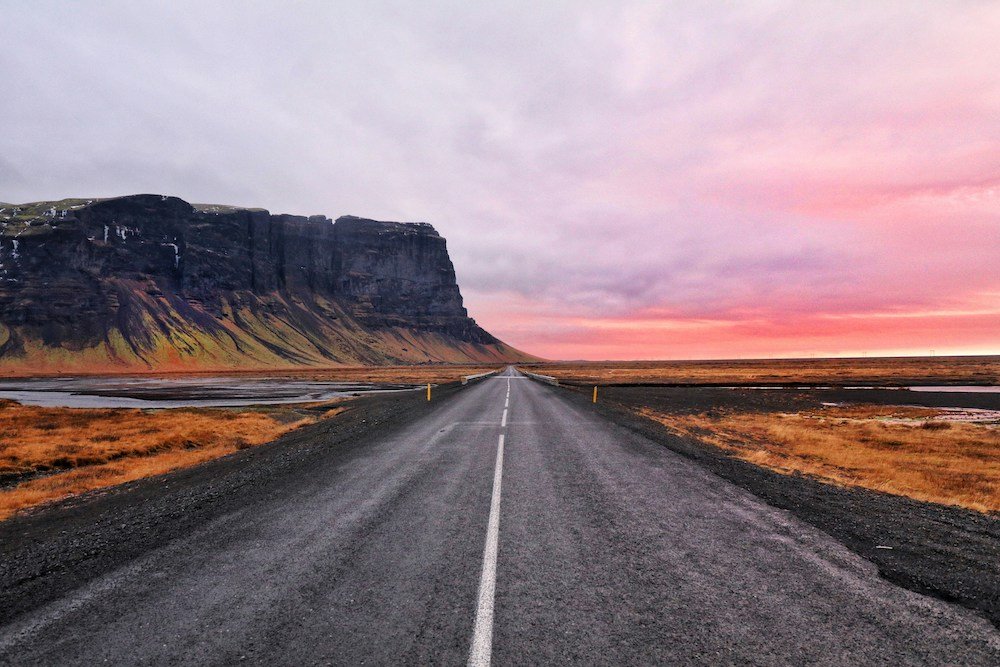
FAQ’s About the North Atlantic Islands:
Are there any islands in the North Atlantic?
Yes, there are numerous islands scattered across the North Atlantic Ocean. These islands vary in size, geology, and cultural significance, offering a diverse range of landscapes and experiences to visitors.
What are 4 major European islands in the North Atlantic?
Four major European islands in the North Atlantic include:
- Iceland: Known for its volcanic landscapes, glaciers, and vibrant culture.
- Ireland: Renowned for its lush green countryside, historic sites, and warm hospitality.
- Great Britain: Comprising England, Scotland, and Wales, known for its diverse landscapes, rich history, and iconic landmarks.
- Faroe Islands: Located between Iceland and Norway, known for their rugged cliffs, seabird colonies, and Norse heritage.
What countries are in the North Atlantic?
Several countries border the North Atlantic Ocean, including:
- United States
- Canada
- United Kingdom
- Iceland
- Ireland
- Norway
- Portugal
- Spain
- France
- Denmark
- Greenland (an autonomous territory of Denmark)
Why are there so few islands in the North Atlantic?
While the North Atlantic does have numerous islands, it may seem like there are relatively fewer compared to other regions. This perception may stem from the vastness of the ocean and the dispersion of islands throughout it. Additionally, factors such as geological activity, sea level changes, and climate patterns influence the formation and distribution of islands in this region.
What famous islands are in the North Atlantic Ocean?
Some famous islands in the North Atlantic Ocean include:
- Iceland: Known for its geothermal wonders, waterfalls, and rugged landscapes.
- Bermuda: Famous for its pink sand beaches, coral reefs, and maritime history.
- The Azores: Known for their volcanic landscapes, hot springs, and lush greenery.
- The Canary Islands: Famous for their year-round sunshine, diverse ecosystems, and volcanic terrain.
- The Bahamas: Known for their crystal-clear waters, white sand beaches, and vibrant marine life.
What is the secret island in the Atlantic Ocean?
The “secret island” in the Atlantic Ocean may refer to various remote or lesser-known islands that are not as widely recognized as major tourist destinations. These islands often offer unspoiled natural beauty, unique wildlife, and a sense of seclusion away from the crowds. Examples include the uninhabited islands of St. Kilda in Scotland, the Lofoten Islands in Norway, or the remote islands of Tristan da Cunha in the South Atlantic. Each of these islands possesses its own charm and allure, making them “secret” gems for adventurous travelers to discover.
